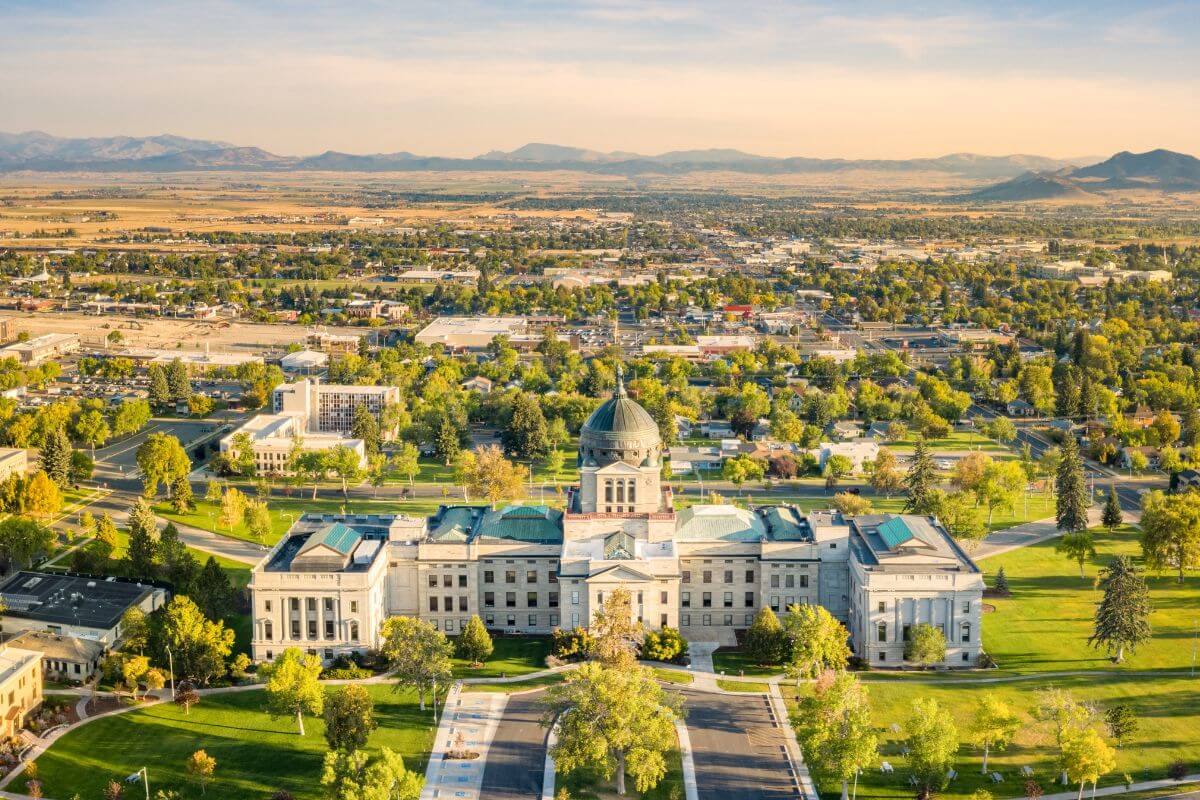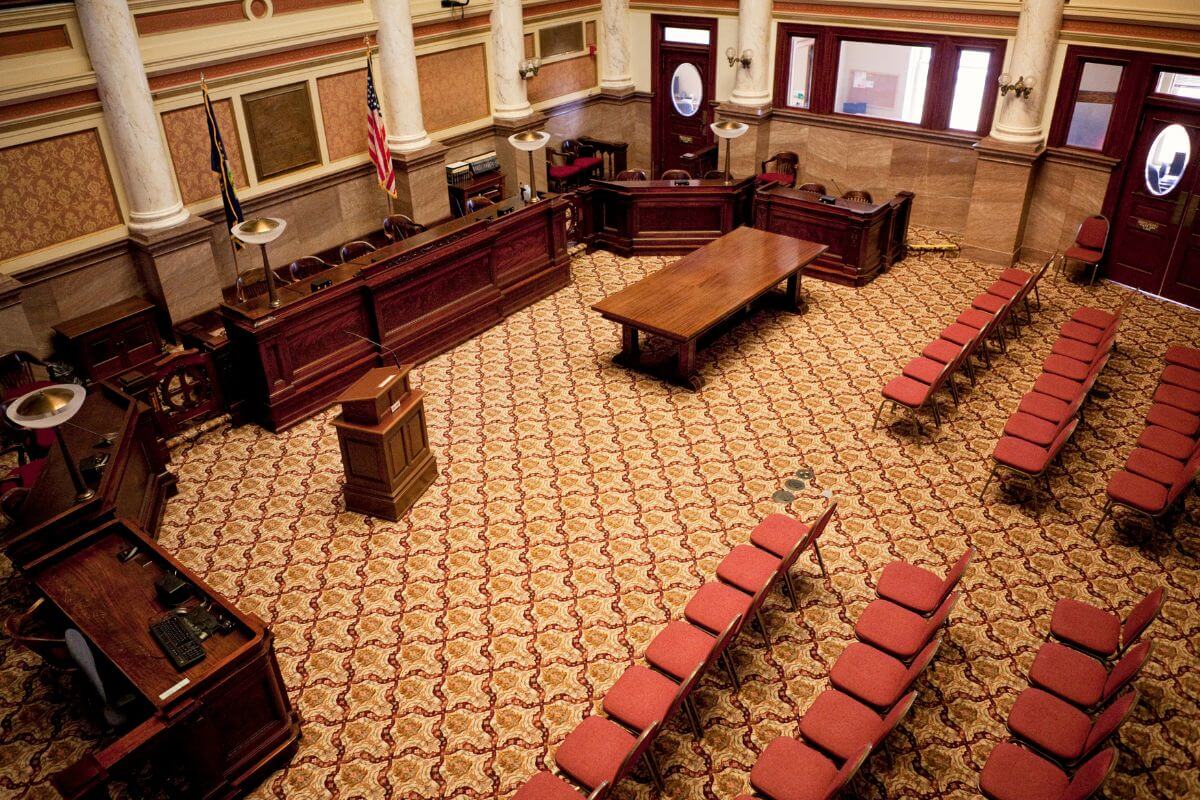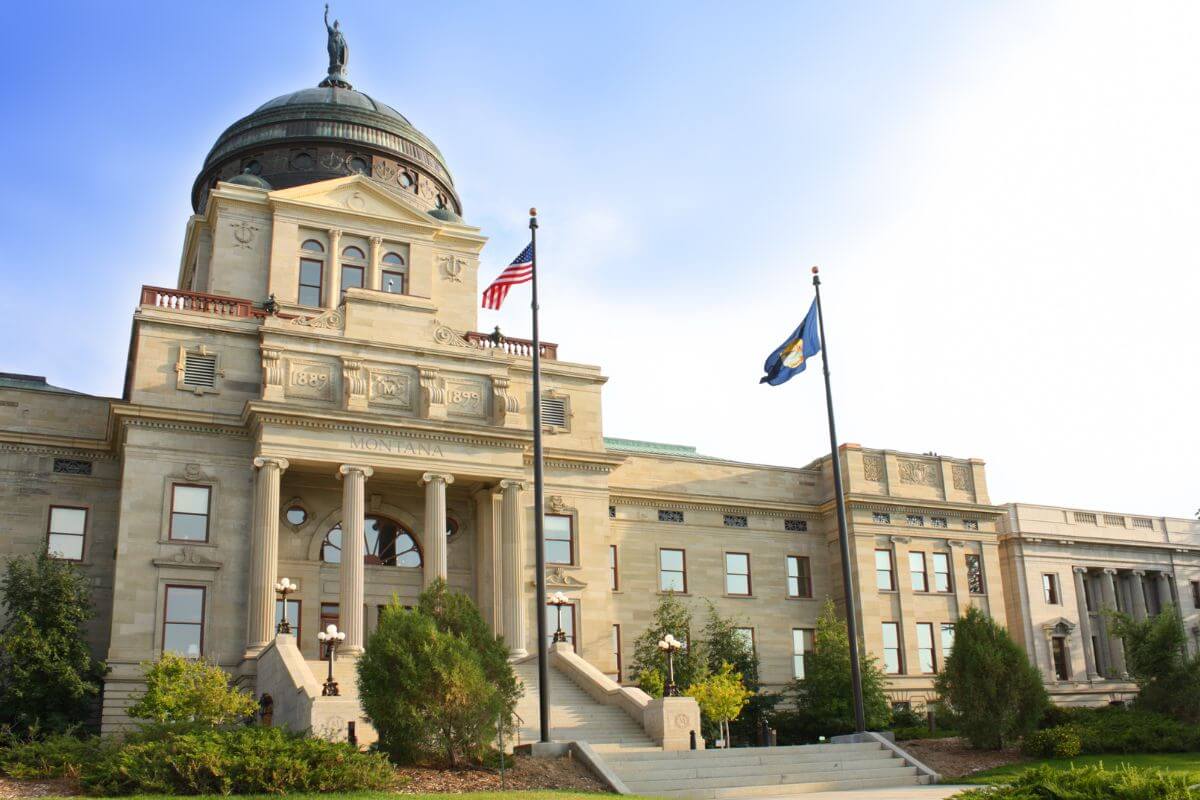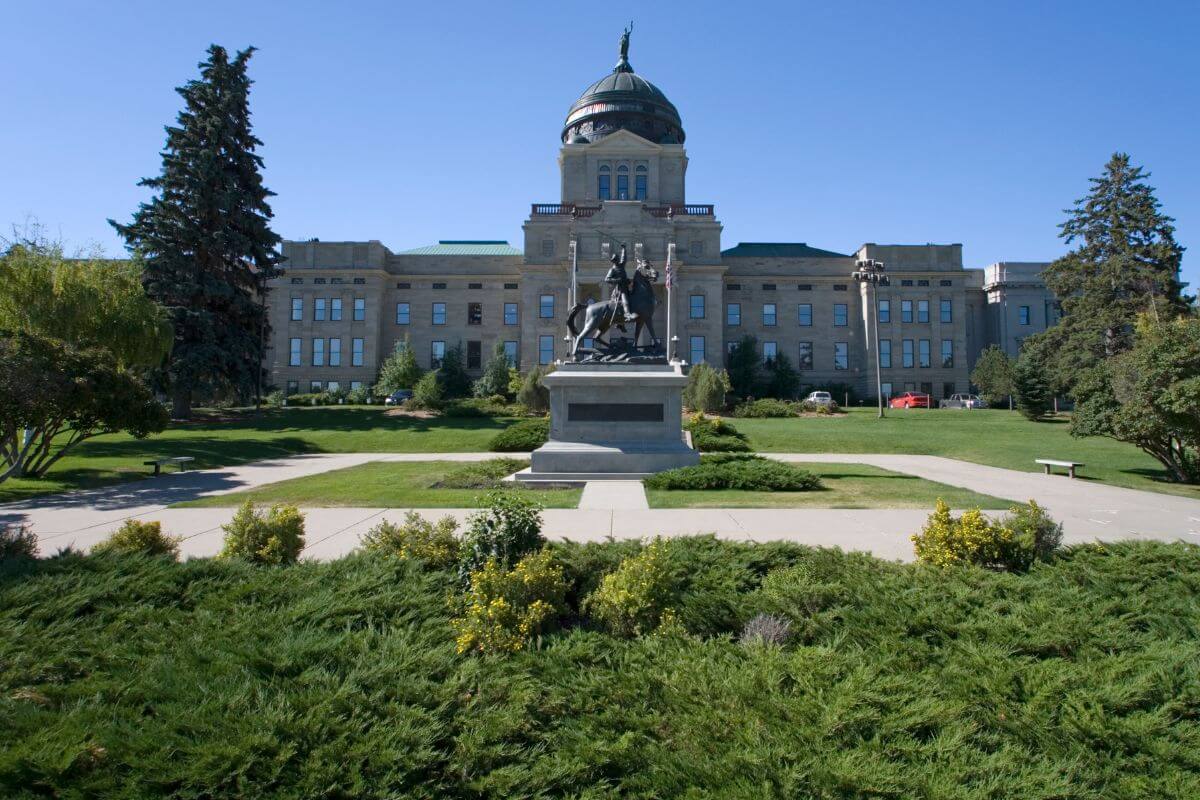Hey there, if you love the experience of stepping into the footsteps of history, the State Capitol Building is a destination you shouldn’t miss!
This historic landmark captures the Big Sky Country’s past, with its paintings and depictions that leave a lasting impact on anybody who will see it.
With many things to see and experience, this article is perfect for history enthusiasts, architecture lovers, and anyone who wants to explore the beauty of Montana through its state capitol.
- Related Article: Symbols Representing Montana
Join me on an enchanting journey as we delve into the Montana State Capitol and discover why this building holds such significance in the state’s history.
The Montana State Capitol and Its History

In 1864, the United States Congress passed a law called the Organic Act. This law created the Montana Territory as a separate area governed by the United States.
Helena was chosen as the territorial capital.
The Organic Act appointed a governor and other officials to oversee the territory. The Treasure State remained a territory for many years until it became a state in 1889.
In 1899, the construction of the Capitol started. It was then completed in 1902.
The Capitol Campus Historic District covers about 60 acres in the eastside area of Helena.
Over the years, various additions, renovations, and artworks have enhanced the Capitol’s beauty. This majestic building stands as a symbol of Montana’s rich governance history and architectural excellence.
Montana State Capitol’s Role in Governance

The State Capitol serves as the central hub for the state’s legislative, executive, and judicial branches, providing a space for them to carry out their duties.
Inside the Capitol, you can find the governor’s offices, legislative chambers, committee rooms, and various government agencies.
The Capitol Building serves as a headquarter where lawmakers gather, debate, and pass legislation.
Beyond its aesthetic appeal, the Capitol holds great significance as a representation of democratic governance in the state. It plays a crucial role in shaping the state’s policies and laws.
Moreover, the Capitol is open to the public, offering an opportunity for citizens to interact with elected officials and actively participate in the democratic process.
Additionally, the Capitol’s location on North Avenue and its gentle slope make it a prominent landmark in Helena.
Montana State Capitol’s Architectural Marvels

The Capitol Building displays architectural marvels in the Neoclassical style.
These include semi-elliptical and circular paintings that bring an elegant touch to every corner of this magnificent structure.
In 1898, the new Capitol Commission brought in the architectural firm of Charles Bell and John Kent, along with Joseph Soss’ construction company from Butte, to finalize the building’s construction.
In 1911, three local artists were given the task of creating paintings for different areas of the building.
Ralph E. DeCamp was assigned to the Law Library, Edgar S. Paxson to the House of Representatives Lobby, and Charles M. Russell to the House of Representatives Chamber.
The historical depictions portrayed in these paintings reflect the state’s past.
One of the features of the Capitol is the Senate House Chamber, where the beautiful painting of Russell’s Lewis and Clark Meeting the Flathead Indians at Ross’ Hole is found.
You can also find the Montana seal displayed in various locations within the Capitol Building, including the legislative chambers and other prominent areas.
It is a significant symbol of the state’s government and identity.
Touring and Visiting the Montana State Capitol

The Capitol is open to visitors from Monday to Friday, 7:00 a.m. to 6:00 p.m., and on weekends from 9:00 a.m. to 3:00 p.m.
The Building is closed on Christmas Day and New Year’s Day. Occasionally, on weekends, it may be temporarily closed for routine maintenance.
Tours start at the information desk on the first floor. You can get self-guided tour booklets from there and begin your exploration of the Capitol’s history.
The guided tours are also great, led by approachable staff and volunteers. They provide a detailed exploration of the Capitol’s many features and architecture.
Be sure to visit the Montana Historical Society Research Center Photograph Archives, the Governor’s Reception Room, and the Art Collection.
Also, don’t forget to check out the gift shop, where you can find excellent souvenirs and gifts for your friends and family.
If you’re unable to visit the Capitol in person, there are several online resources available that give you a glimpse into the building’s rich history and significance.
Kids will especially enjoy the scavenger hunt guided by Seaman, the adventurous Newfoundland companion of Lewis and Clark.
Montana State Capitol Final Thoughts

The Montana State Capitol is an important landmark with a fascinating history that plays a crucial role in governing the state.
The Capitol Building, built in the Neoclassical style, has impressive architecture and artworks that represent Montana’s past.
It serves as the central hub for the state’s legislative, executive, and judicial branches, where lawmakers gather to make laws.
Besides its functional purpose, the Capitol is open to the public, allowing citizens to actively engage in the democratic process and meet elected officials.
Visitors can learn about the Capitol’s history through self-guided or guided tours, but there are online resources for those who can’t visit in person as well.
The Montana State Capitol symbolizes Montana’s governance history, impressive architecture, and democratic values.
Montana State Capitol FAQs
1. What Is the Name of the Montana Capitol Building?
The Capitol Building is sometimes called the “People’s House”.
This Neoclassical-style building belongs to all the local people, reflecting the state’s commitment to democracy and openness.
2. What Is on Top of the Montana State Capitol Building?
The Capitol Building in Helena is topped by a copper dome and a statue of Lady Liberty. The feminine statue holds a torch and a shield, signifying her role as a protector and a guide for the people.
3. In What City Is the Montana State Capitol Located?
The Capitol Building can be found in Helena, the capital city of the state.
The imposing structure, with its copper dome and beautiful paintings, is a must-visit for those who want to learn the state’s history and those interested in the rich past of the area.
4. Can You Visit the Capitol Without Taking a Tour?
When you visit the Capitol, you have the option to explore the “People’s House” at your own pace through self-guided tours.
The Montana Historical Society provides a brochure for self-guided tours, and the Capitol is easily accessible, making it convenient for both locals and tourists to explore.
If you like a more detailed and informative experience, official tours and presentations are also available.
5. Can I Walk Into the Capitol Building for Free?
Yes, you can walk into the Capitol for free at any time during open hours. The Capitol is open to the general public, and advanced reservations are not required.
If you want to learn more about Montana, keep your mind engaged with these articles:
- https://mhs.mt.gov/education/Capitol/Capitol-History
- https://leg.mt.gov/civic-education/visiting-capitol/
- https://mhs.mt.gov/shpo/docs/AGOL/24LC2422_NR.pdf
- https://mhs.mt.gov/education/Capitol/Capitol-Art/
- https://www.umt.edu/ccfwd/public-policy/2017guidetomontanalegislature.pdf
- http://mhs.mt.gov/education/Capitol
- https://directory.mt.gov/govt/state-dir/agency/library
- https://helenacollege.edu/catalog/helenahistory.aspx
- https://mhs.mt.gov/education/capitol/governors

